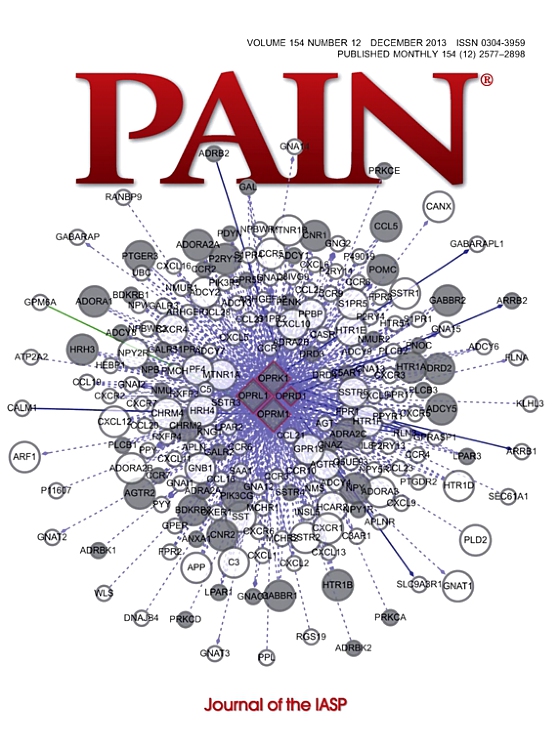复杂区域性疼痛综合征中疼痛的空间分布。
IF 5.9
1区 医学
Q1 ANESTHESIOLOGY
引用次数: 0
摘要
在复杂区域性疼痛综合征(CRPS)中,疼痛常常从受伤部位向外扩散,但导致这一过程的原因尚不清楚。为了探讨这一点,我们研究了136例患者的疼痛图,这些疼痛图与损伤的类型和位置、疼痛强度和质量、CRPS持续时间、亚型以及对热刺激和机械刺激的痛觉过敏有关。使用ImageJ多边形选择工具对疼痛区域进行量化。患肢疼痛面积随疼痛强度、患肢及同侧前额痛觉过敏指数增大而增大(P < 0.01)。近端肢体损伤患者的疼痛面积大于远端肢体损伤,CRPS I型大于II型,CRPS长期型大于急性CRPS,温暖型大于对称型或冷型,经历烧灼痛和/或针刺的患者的疼痛面积(P < 0.05)。总的来说,这些预测因子占患肢疼痛区域变异的30.4% (P < 0.001)。35例患者在5 ~ 124个月后重新评估。在植入电刺激器或交感神经阻滞(N = 20)等侵入性治疗后,11例患者患肢疼痛面积减少,9例患者疼痛面积增加。在大多数其他患者的随访期间,疼痛区域增加,并且在少数病例中,疼痛在先前未受影响的肢体中自发发展-特别是在基线时疼痛区域更大和疼痛过敏更强烈的受影响肢体中。总之,研究结果表明外周和/或中枢伤害感受器敏化与CRPS的疼痛扩展有关。本文章由计算机程序翻译,如有差异,请以英文原文为准。
Spatial distribution of pain in complex regional pain syndrome.
Pain often spreads away from the injured site in complex regional pain syndrome (CRPS), but what drives this process is unclear. To explore this, pain drawings were investigated in 136 patients in relation to the type and location of injury, pain intensity and quality, CRPS duration, subtypes, and hyperalgesia to thermal and mechanical stimuli. Areas of pain were quantified using the ImageJ polygon selection tool. The pain area in the affected limb increased in line with pain intensity and with indices of hyperalgesia in the affected limb and ipsilateral forehead (P's < 0.01). The pain area was greater in patients with proximal than distal limb injury, CRPS I than II, longstanding than acute CRPS, the warm than symmetrical or cold subtypes, and in patients who experienced burning pain and/or pins-and-needles (P's < 0.05). Together, these predictors accounted for 30.4% of variance in pain area in the affected limb (P < 0.001). Thirty-five patients were reassessed after 5 to 124 months. After an invasive treatment such as an electrical stimulator implant or sympathetic blockade (N = 20), the pain area decreased in the affected limb of 11 patients but increased in 9 others. The pain area increased during follow-up in most other patients, and pain developed spontaneously in a previously unaffected limb in a minority of cases-specifically, in those with a greater area of pain and stronger hyperalgesia in the affected limb at baseline. Together, the findings suggest that peripheral and/or central nociceptor sensitization is associated with pain expansion in CRPS.
求助全文
通过发布文献求助,成功后即可免费获取论文全文。
去求助
来源期刊

PAIN®
医学-临床神经学
CiteScore
12.50
自引率
8.10%
发文量
242
审稿时长
9 months
期刊介绍:
PAIN® is the official publication of the International Association for the Study of Pain and publishes original research on the nature,mechanisms and treatment of pain.PAIN® provides a forum for the dissemination of research in the basic and clinical sciences of multidisciplinary interest.
 求助内容:
求助内容: 应助结果提醒方式:
应助结果提醒方式:


